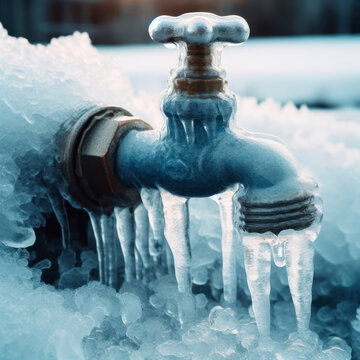Preventing Frozen Pipes: Best Methods for Cold Weather
Preventing Frozen Pipes: Best Methods for Cold Weather
Blog Article
On this page on the next paragraphs you can locate a lot of excellent facts involving Preventing and dealing with frozen pipes.

Cold weather can damage your pipes, especially by freezing pipelines. Right here's just how to avoid it from taking place and what to do if it does.
Intro
As temperatures decline, the risk of icy pipelines boosts, possibly resulting in costly repairs and water damages. Recognizing just how to avoid frozen pipelines is important for homeowners in cool climates.
Prevention Tips
Insulating prone pipes
Cover pipes in insulation sleeves or utilize warmth tape to safeguard them from freezing temperatures. Focus on pipes in unheated or exterior locations of the home.
Heating methods
Maintain indoor areas effectively warmed, specifically areas with plumbing. Open cupboard doors to permit cozy air to distribute around pipelines under sinks.
How to determine icy pipelines
Look for lowered water circulation from taps, unusual odors or noises from pipelines, and noticeable frost on exposed pipelines.
Long-Term Solutions
Architectural changes
Think about rerouting pipes far from exterior wall surfaces or unheated locations. Include additional insulation to attics, cellars, and crawl spaces.
Updating insulation
Buy top notch insulation for pipes, attics, and wall surfaces. Appropriate insulation aids maintain regular temperatures and decreases the danger of icy pipes.
Shielding Outdoor Pipes
Yard hoses and outdoor taps
Detach and drain pipes yard tubes prior to winter season. Mount frost-proof spigots or cover outside taps with shielded caps.
Comprehending Icy Pipelines
What creates pipelines to ice up?
Pipes freeze when exposed to temperature levels listed below 32 ° F (0 ° C) for expanded periods. As water inside the pipelines ices up, it increases, taxing the pipeline wall surfaces and possibly triggering them to break.
Dangers and damages
Icy pipelines can bring about water disruptions, residential property damages, and pricey repair services. Ruptured pipelines can flood homes and create extensive architectural damages.
Signs of Frozen Piping
Identifying icy pipelines early can avoid them from bursting.
What to Do If Your Pipes Freeze
Immediate activities to take
If you presume frozen pipes, maintain faucets open to relieve stress as the ice melts. Make use of a hairdryer or towels soaked in hot water to thaw pipes gradually.
Verdict
Avoiding icy pipelines calls for positive steps and fast feedbacks. By comprehending the causes, indications, and preventive measures, home owners can safeguard their plumbing throughout winter.
5 Ways to Prevent Frozen Pipes
Drain Outdoor Faucets and Disconnect Hoses
First, close the shut-off valve that controls the flow of water in the pipe to your outdoor faucet. Then, head outside to disconnect and drain your hose and open the outdoor faucet to allow the water to completely drain out of the line. Turn off the faucet when done. Finally, head back to the shut-off valve and drain the remaining water inside the pipe into a bucket or container. Additionally, if you have a home irrigation system, you should consider hiring an expert to clear the system of water each year.
Insulate Pipes
One of the best and most cost-effective methods for preventing frozen water pipes is to wrap your pipes with insulation. This is especially important for areas in your home that aren’t exposed to heat, such as an attic. We suggest using foam sleeves, which can typically be found at your local hardware store.
Keep Heat Running at 65
Your pipes are located inside your walls, and the temperature there is much colder than the rest of the house. To prevent your pipes from freezing, The Insurance Information Institute suggests that you keep your home heated to at least 65 degrees, even when traveling. You may want to invest in smart devices that can keep an eye on the temperature in your home while you’re away.
Leave Water Dripping
Moving water — even a small trickle — can prevent ice from forming inside your pipes. When freezing temps are imminent, start a drip of water from all faucets that serve exposed pipes. Leaving a few faucets running will also help relieve pressure inside the pipes and help prevent a rupture if the water inside freezes.
Open Cupboard Doors
Warm your kitchen and bathroom pipes by opening cupboards and vanities. You should also leave your interior doors ajar to help warm air circulate evenly throughout your home.
:strip_icc()/snow-outdoor-faucet-pipes-4af65d1e5e904fb1aa7bf74071fe5d89.jpg)
Do you appreciate reading up on Winter Plumbing Precautions: Preventing Frozen Pipes? Write feedback directly below. We'd be delighted to find out your thinking about this blog posting. Hoping to see you back again in the near future. For those who enjoyed reading our article plz do not forget to share it. Thanks for your time. Don't hesitate to pay a visit to our blog back soon.
Book 24/7 Report this page